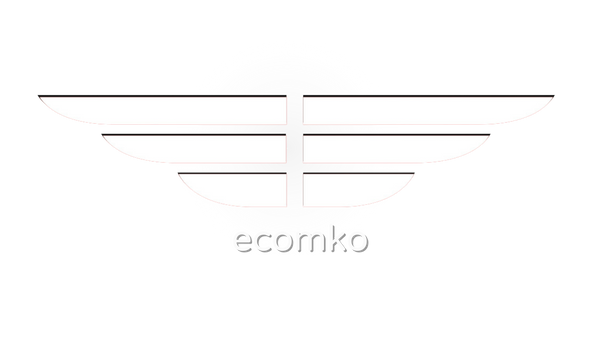At ecomko, we believe that the synergy between Conversion Rate Optimization (CRO) and SEO optimization is a game-changer for your website performance. Our experience shows that optimized images as well as product page & category content not only enhance user experience but will also improve search engine rankings. Let’s dive into how you can leverage these strategies to elevate your website's performance. Book a meeting to discover what we have learned about AI enhanced images and SERP rankings.
The Importance of Conversion Rate Optimization (CRO)
Conversion Rate Optimization (CRO) is the practice of enhancing your website to increase the percentage of visitors who complete a desired action, such as making a purchase, signing up for a newsletter, or filling out a contact form. Effective CRO involves several key elements:
Conversion Rate Optimization (CRO) focuses on improving the percentage of visitors to a website who complete a desired action. Here are key points to consider for CRO:
- Clear Value Proposition:
- Ensure that your website clearly communicates the unique value of your product or service.
- Compelling Call-to-Actions (CTAs):
- Use strong, action-oriented language for your CTAs.
- Make CTAs prominent and easy to find.
- Simplified Navigation:
- Ensure that your site is easy to navigate.
- Minimize the number of clicks to reach key information or complete actions.
- Responsive Design:
- Optimize your site for all devices, including mobile, tablet, and desktop.
- Fast Load Times:
- Improve site speed to reduce bounce rates and increase user satisfaction.
- Trust Signals:
- Include UGC, customer reviews, testimonials, security badges, and certifications to build trust.
- A/B Testing:
- Continuously test different elements such as headlines, images, and CTA buttons to determine what works best.
- Personalization:
- Use data to tailor the user experience to individual visitors, such as personalized recommendations.
- Clear and Concise Content:
- Use clear, concise, and engaging copy.
- Highlight benefits rather than features.
- Optimized Forms:
- Simplify forms by reducing the number of fields.
- Use clear labels and provide inline validation.
- High-Quality Images and Videos:
- Use professional, high-quality images and videos that resonate with your audience.
- Effective Use of White Space:
- Avoid clutter and use white space to make the content more readable and engaging.
- Social Proof:
- Display user-generated content, such as social media posts, to build credibility.
- Consistent Branding:
- Ensure that your branding is consistent across all pages to build recognition and trust.
- Clear Return and Shipping Policies:
- Make sure that your return and shipping policies are easy to find and understand.
- Live Chat Support:
- Offer live chat support to assist visitors in real time and address their queries immediately.
- User-Friendly Checkout Process:
- Simplify the checkout process to reduce cart abandonment.
- Offer multiple payment options.
- Analytics and Heatmaps:
- Use analytics tools and heatmaps to understand user behavior and identify areas for improvement.
- SEO Optimization:
- Ensure that your website is optimized for search engines to drive organic traffic.
- Clear Contact Information:
- Make it easy for visitors to find contact information or get in touch with you.

The Power of CRO Image Optimization
Image optimization involves enhancing your images to make them more appealing to search engines and users. Properly optimized images can drive more traffic to your site and improve your search engine rankings. Here’s how you can optimize your images:
- Descriptive File Names: Rename image files with descriptive, keyword-rich filenames before uploading them to your website.
- Alt Text: Provide descriptive alt text for all images to improve accessibility and help search engines understand the content.
- Compress Images: Use image compression tools to reduce file sizes without compromising quality for faster loading times.
- Image Sitemaps: Include images in your XML sitemaps to help search engines discover and index them more efficiently.
- Captions and Context: Use relevant captions and ensure that images are contextually placed within the content.
- Structured Data: Use structured data (schema markup) to provide additional information about the images to search engines.
- Responsive Images: Implement responsive images using the srcset attribute to ensure optimal display on various devices.
The ecomko Approach: Combining CRO and SEO Image Optimization
At Ecomko, we’ve been testing image optimization, including enhancing backgrounds, and we’ve noticed that these optimized images get indexed higher in Google. This higher indexing not only boosts visibility but also contributes to better user engagement and conversions. Here’s why we feel it’s imperative for an SEO professional to manage CRO:
- Expertise in Data Analysis: SEO professionals are skilled at analyzing data to understand user behavior and identify areas for improvement.
- Holistic Approach: An SEO expert can take a holistic approach, ensuring that both on-page and off-page elements are optimized for maximum impact.
- Continuous Improvement: SEO professionals are adept at A/B testing and making data-driven decisions to continuously improve conversion rates.
- Staying Updated: The digital landscape is constantly evolving, and SEO professionals stay updated with the latest trends and algorithm changes to keep your site competitive.
CRO & SEO Go Hand in Hand
Combining CRO with SEO image optimization can significantly enhance your website’s performance, leading to higher search engine rankings and increased conversions. At ecomko, we believe in the power of this synergy and the importance of having an SEO professional manage your CRO efforts. By leveraging expert knowledge and proven strategies, you can ensure that your website not only attracts more visitors but also converts them into loyal customers.
Ready to take your website to the next level? Contact ecomko today to learn how our SEO professionals can help you optimize for success.




